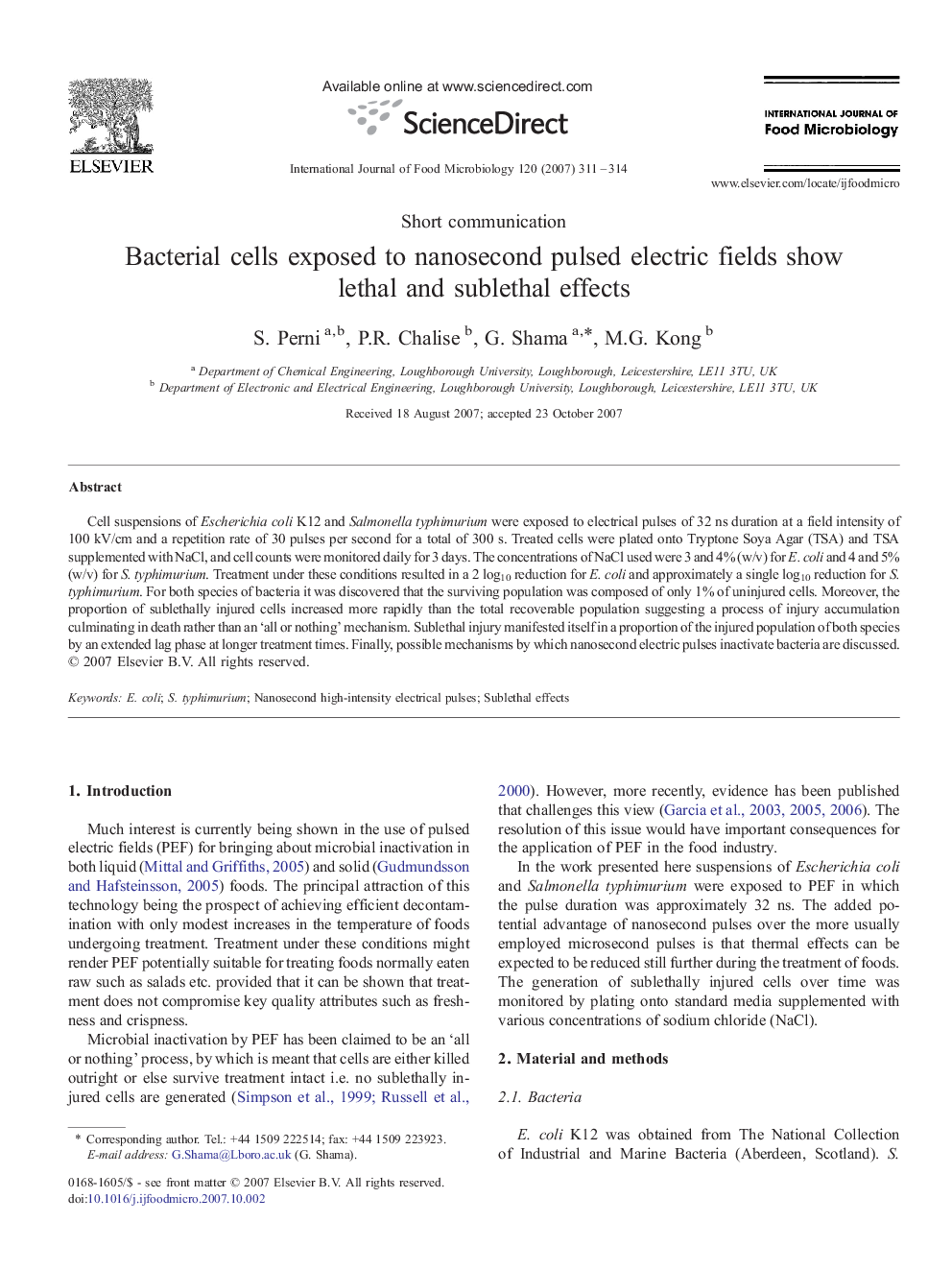| Article ID | Journal | Published Year | Pages | File Type |
|---|---|---|---|---|
| 4369610 | International Journal of Food Microbiology | 2007 | 4 Pages |
Abstract
Cell suspensions of Escherichia coli K12 and Salmonella typhimurium were exposed to electrical pulses of 32Â ns duration at a field intensity of 100Â kV/cm and a repetition rate of 30 pulses per second for a total of 300Â s. Treated cells were plated onto Tryptone Soya Agar (TSA) and TSA supplemented with NaCl, and cell counts were monitored daily for 3Â days. The concentrations of NaCl used were 3 and 4% (w/v) for E. coli and 4 and 5% (w/v) for S. typhimurium. Treatment under these conditions resulted in a 2 log10 reduction for E. coli and approximately a single log10 reduction for S. typhimurium. For both species of bacteria it was discovered that the surviving population was composed of only 1% of uninjured cells. Moreover, the proportion of sublethally injured cells increased more rapidly than the total recoverable population suggesting a process of injury accumulation culminating in death rather than an 'all or nothing' mechanism. Sublethal injury manifested itself in a proportion of the injured population of both species by an extended lag phase at longer treatment times. Finally, possible mechanisms by which nanosecond electric pulses inactivate bacteria are discussed.
Related Topics
Life Sciences
Agricultural and Biological Sciences
Food Science
Authors
S. Perni, P.R. Chalise, G. Shama, M.G. Kong,
